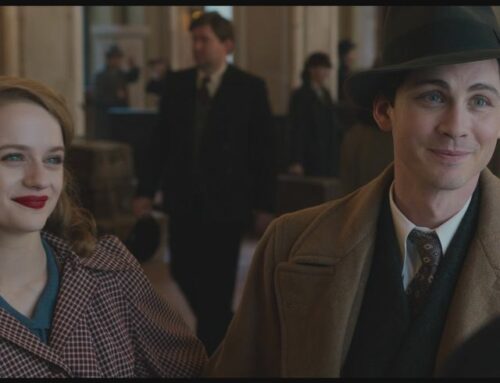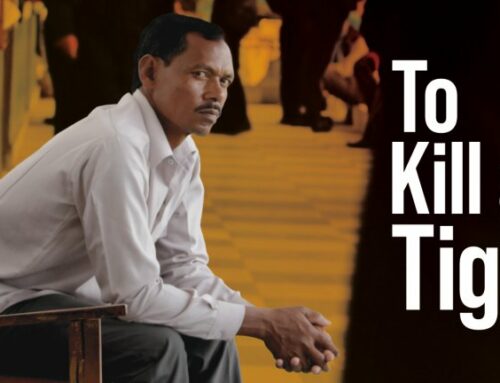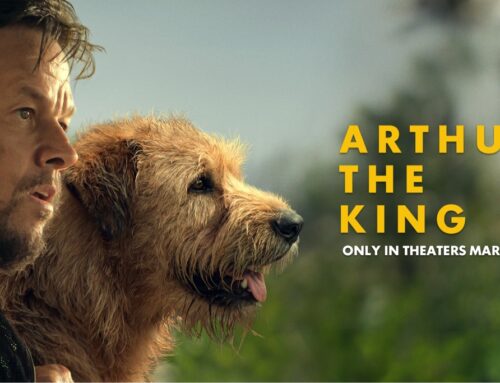HUGO is not the first “family” film ever directed by Martin Scorsese. But it may be the first “family” film he’s directed that didn’t involve wiseguys shoving bodies in trunks in between mouthfuls of lasagna. Over the years, Scorsese has focused his lens on various milieus that have their own special kinds of violence– GOODFELLAS, RAGING BULL, even 1993’s THE AGE OF INNOCENCE, Edith Wharton’s 19th century high society novel involving the brutal social rituals that could cut someone to the figurative bone, where wielding the correct knife and fork might be seen as weaponry. What’s new in HUGO is a kinder, gentler Scorsese, who has married his love of family to his passion for film, in a state of the art 3D package which sheds welcome light on the art of film and fills a hole in the heart of its history. It is not the masterpiece people have said it is; but it is a finely crafted, intelligently conceived piece of work.
The title character of the film, based on the children’s book THE INVENTION OF HUGO CABRET, is played by Asa Butterfield of the big blue saucer eyes (THE BOY IN THE STRIPED PAJAMAS). He is a fatherless child living inside the giant clock at a grand Paris train station. Hugo has been adopted by a drunken uncle and forced to work for his supper by keeping the clocks working. All the child has left of his late father is a strange mechanical man– a magician’s prop called an automaton– which is missing the heart-shaped key to unlock its mechanism. This leads to the unlocking of an even greater mystery involving one of cinema’s pioneers, in fact, a magician turned filmmaker, George Melies.
Scorsese is in love with the magic of movies himself. If you’ve seen his documentaries A PERSONAL JOURNEY THROUGH AMERICAN MOVIES and its companion piece MY VOYAGE TO ITALY–his valentine to the dark Italian neo-realist films that Scorsese watched growing up and which colored his psyche and shaped him as a filmmaker– you recognize the impulse again in HUGO. But I found HUGO less compelling than either of Scorsese’s documentaries; he’s handicapped by sentiment he hasn’t quite prepared us for, and a lack of momentum in the storytelling. Then there’s the 3D format itself which still feels superfluous –but not until you get past the opening sequence which is a doozy.
The setting– the train station– allows Scorsese to reference one of the most astonishing catastrophes in vehicular history–which occurred on October 22, 1895 when a train on the second floor concourse of Paris’ Gare Montparnasse overran the tracks, crashed through a giant window, and nose-dived 30 feet to the ground below. In HUGO, Scorsese has also broken through to new territory; he has, in fact, picked up the journey begun long ago by the pioneer movie-making Lumiere brothers who in 1895 made a brief silent movie showing a train simply pulling into a station. It sent fledgling movie audiences leaping out of their seats to avoid being hit, as though the train might actually leap off the screen!
Now, we’re equipped for the ride in 3D ! As HUGO begins, we’re instantly drawn into what looks like a huge clock works– when the gears suddenly send us whirling round The Arc de Triomphe, across the Parisian cityscape, down the Champs Elysee, hurtling through the streets and then the tunnels and platforms of a train station, up the spiraling stairwell of its giant clock tower, and into its huge round face– then through it– to the face of the boy peering out from behind the face, his round blue eye filling the screen, gazing back at us! It’s breathtaking. In one shot, we know what Scorsese’s up to–he’s linked the past and present and the way we see ourselves in movies through the magic of the medium itself.
As the movie continues, Scorsese continues to pull the frame every which way, in and out, layering it with iconic images from film’s earliest days, and a myriad of details: snowflakes shops, cafes and quirky characters (if only they had been multi-dimensional too!). There’s a mysterious toymaker played by an almost threatening Ben Kingsley, a sweet flower girl played by Emily Mortimer, an elderly couple flirting with each other, and the piece de resistance–a clumsy creepy love-starved policeman rabidly focused on keeping order and hustling thieving orphans off to jail. Sacha Baron Cohen turns in a yet another funny-strange performance here, which is tempered by his limping vulnerability. And then there is the precocious girl to whom Hugo is drawn–Isabelle, played by the audacious Chloe Grace Moretz. She literally holds the too-coincidentally placed key to this puzzle of an adventure. And their connection is charming and tender.
This is a fun movie for a family to see–and an interesting way to introduce young filmgoers to Martin Scorsese! But it’s a bit long and tedious. For me, HUGO is an eery ode to a mysterious past, rather than a fully present, fleshed-out emotional experience; it has more resonance as I think back on it–like an old photograph slowly revealing its secrets.






Leave A Comment
You must be logged in to post a comment.